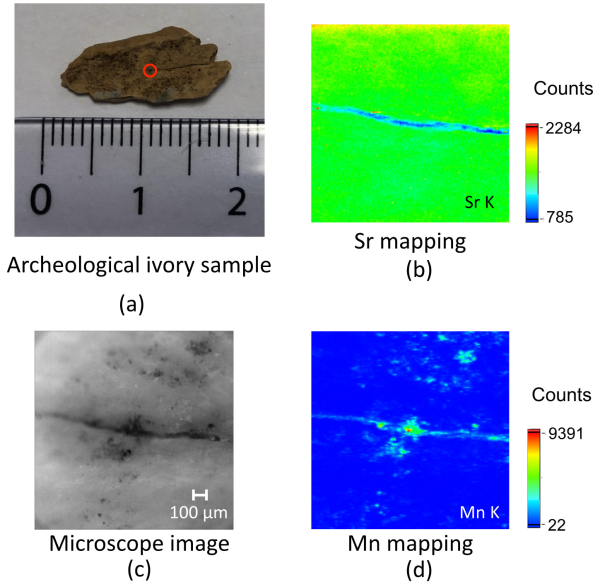Approximately 40,000 years ago, prehistoric humans utilized mammoth ivory to craft the earliest statuettes and manufacture the first musical instruments discovered to date. Mammoth ivory holds significant value as one of the few remaining indicators of this artistic activity from the past. Scientists on the PUMA beamline at the SOLEIL synchrotron collaborate with chemists and archaeologists to investigate these ivory artifacts using synchrotron radiation. This radiation enables the detection of trace elements, present in extremely low concentrations, which are indicative of the burial conditions of archaeological ivory or the living habitat of the mammoths.
A collaborative team of researchers from the IPANEMA laboratory and the Lab-BC CNRS research unit at the Center for Research and Restoration of the French Museums (C2RMF) analyzed trace elements present in ivories from various prehistoric sites in France and Germany dating back to the Aurignacian period (35,000-45,000 years ago). They employed the AGLAE particle accelerator (protons), located at the Louvre Museum, designed for the elemental analysis of art and archaeological objects, to obtain initial results. The researchers observed variations in trace element concentrations, such as zinc, strontium, and bromine, between different prehistoric sites. As these characteristic trace elements primarily incorporated during the mammoth's lifetime reflect its habitat, they form a chemical signature of the origin of the ivory used by the humans of that era, referred to as endogenous or biogenic elements. In contrast, other elements like fluorine, iron, or manganese were not initially present in the ivory but incorporated during burial, classified as exogenous elements, witnessing the alteration of ivory in the soil.
To validate these findings, researchers went to the PUMA beamline at SOLEIL synchrotron to analyze ivory samples from the Aurignacian period originating from the Hohle Fels site in southwestern Germany. This site yielded some of the oldest human-like statuettes and the earliest known musical instruments and it has been occupied successively by Neanderthals (Homo sapiens neanderthalensis) and Homo sapiens sapiens, from whom we descend.

Figure 1: X-ray fluorescence mappings of manganese and strontium traces in an ivory sample from Hohle Fels cave. The measurement area on the sample is indicated by the red circle in the top-left photo (a).
Scientists visualized the spatial distribution of endogenous/exogenous elements in ivory (with mass concentrations ranging from 0.1% to 0.001%) (see Figure 1). PUMA provided better mappings for elements heavier than iron and of low concentration (around 0.001%), such as strontium, compared to AGLAE. Conversely, the AGLAE accelerator was more suitable for mapping lighter elements than calcium, like fluorine. Certain elements, like manganese or iron, were well detected by both PUMA and AGLAE. This complementarity enabled a comprehensive study of ivory samples. The spatial distribution of endogenous and exogenous elements differed; endogenous elements exhibited a homogeneous distribution when well-preserved, as seen in the case of strontium in Figure 1b. Conversely, an exogenous element like manganese showed heterogeneous distribution, concentrated in black spots on the surface and in cracks (Figure 1d). The study confirmed previous observations made at AGLAE and facilitated the detection of additional trace elements at SOLEIL, classified as either endogenous or exogenous.
Through combined analysis at the PUMA beamline at the SOLEIL synchrotron and at the New AGLAE microfocus beamline at C2RMF, a team of researchers successfully distinguished endogenous and exogenous elements in prehistoric ivory samples from Hohle Fels cave in Germany without causing damage. Archaeologists can infer ivory sourcing and potential exchanges among prehistoric humans based on varying endogenous elements between sites. Exogenous elements provide insights into the degradation of ivory during burial—a crucial aspect for preserving these precious ancient materials and passing them on to future generations.
